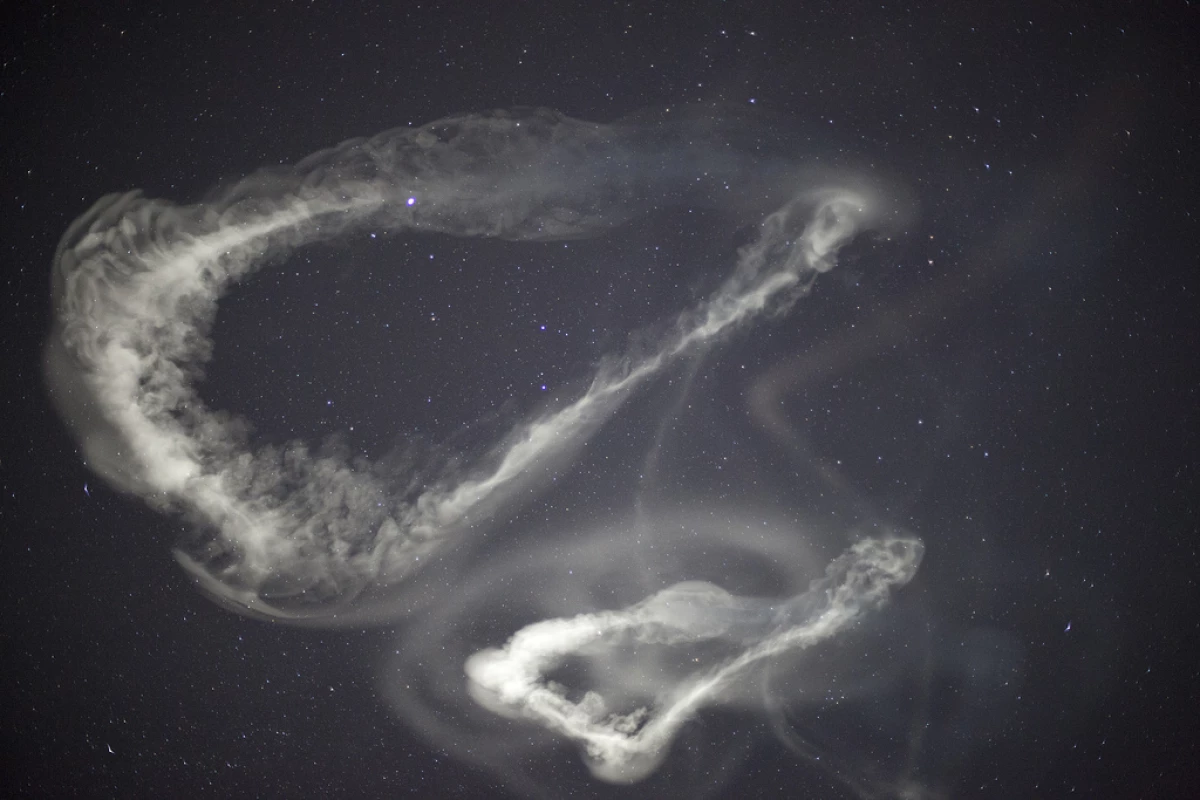NASA launched five rockets in five minutes early on Tuesday morning, as part of its ongoing ATREX mission to study the winds of the upper level jet stream. The rockets carry an onboard chemical which, when released, form clouds revealing wind patterns at outer reaches of Earth's atmosphere. And as you can see from the resulting photography, some striking cloud formations occurred.
Not to be confused with the experimental Japanese ramjet of the same name, ATREX stands for Anomalous Transport Rocket Experiment, which NASA describes as a "Heliophysics sounding rocket mission." Heliophysics merges meteorology and astrophysics, being a study of the interactions between the Sun's heliosphere and objects within its influence, including planetary atmospheres. A sounding rocket is merely another name for an instrument-carrying research rocket.
The first ATREX rocket launched at 4:58 a.m. EDT from NASA's Wallops Flight Facility in Virginia, with the remaining four rockets launching at 80-second intervals. Each rocket carries chemicals released into the high-altitude jet stream (above what we usually hear referred to as jet streams in weather reports) between 60 and 65 miles (97 to 105 km) above the Earth, where winds roar at speeds that can exceed 300 mph (483 km/h).

And in addition to the winds, strong ionospheric electric currents occur at these altitudes which are thought to affect communications. As well as the chemical payloads, two of the rockets carried instruments to measure temperature and pressure at high altitudes.
Sightings of the distinctive clouds were report from as far afield as Wilmington, North Carolina; Charlestown, West Virginia; and Buffalo, New York. The ATREX mission concludes April 3. In addition to our photo gallery, a video of the rocket launches can be seen below.
Source: NASA














